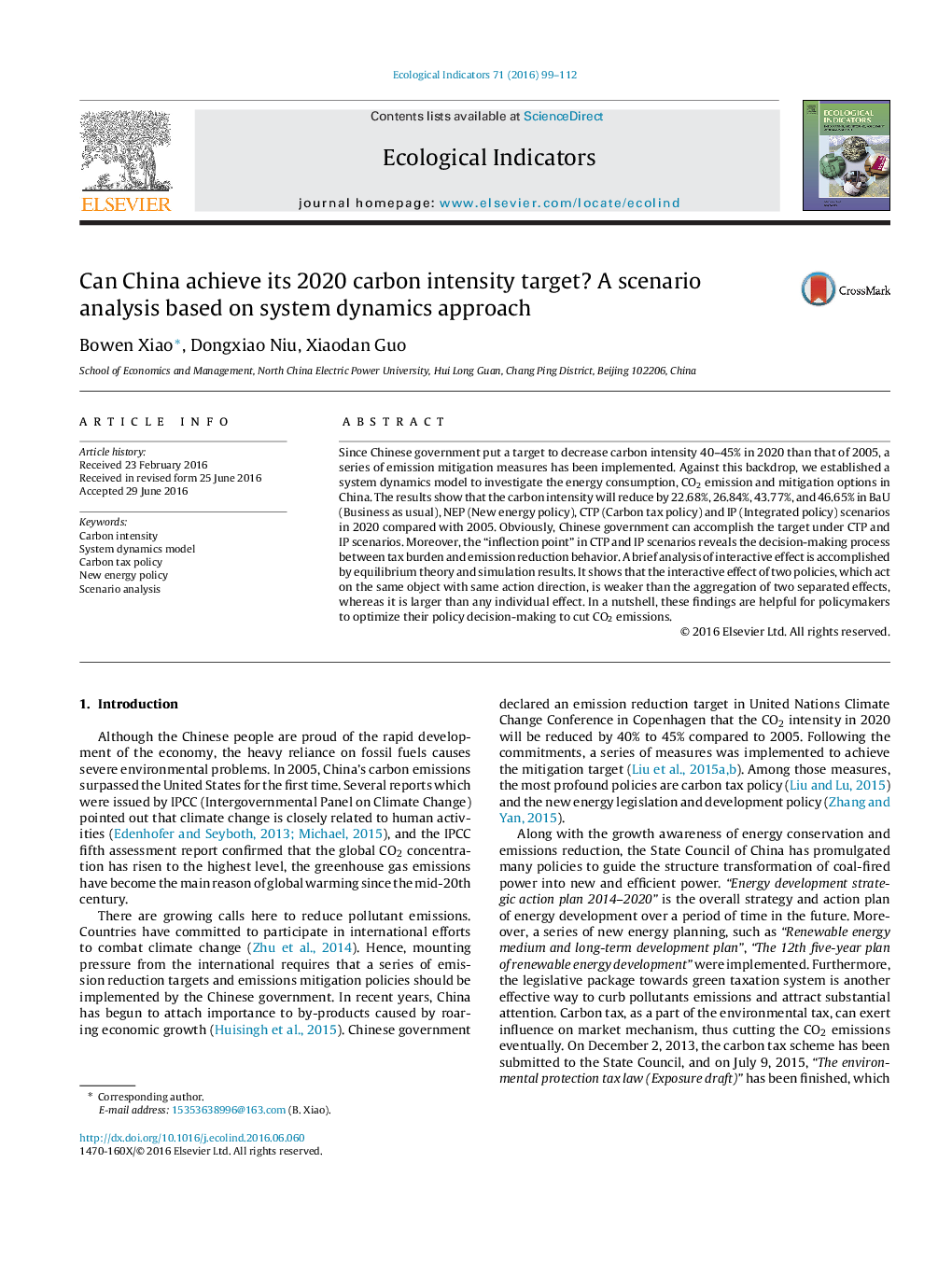| Article ID | Journal | Published Year | Pages | File Type |
|---|---|---|---|---|
| 6292907 | Ecological Indicators | 2016 | 14 Pages |
Abstract
Since Chinese government put a target to decrease carbon intensity 40-45% in 2020 than that of 2005, a series of emission mitigation measures has been implemented. Against this backdrop, we established a system dynamics model to investigate the energy consumption, CO2 emission and mitigation options in China. The results show that the carbon intensity will reduce by 22.68%, 26.84%, 43.77%, and 46.65% in BaU (Business as usual), NEP (New energy policy), CTP (Carbon tax policy) and IP (Integrated policy) scenarios in 2020 compared with 2005. Obviously, Chinese government can accomplish the target under CTP and IP scenarios. Moreover, the “inflection point” in CTP and IP scenarios reveals the decision-making process between tax burden and emission reduction behavior. A brief analysis of interactive effect is accomplished by equilibrium theory and simulation results. It shows that the interactive effect of two policies, which act on the same object with same action direction, is weaker than the aggregation of two separated effects, whereas it is larger than any individual effect. In a nutshell, these findings are helpful for policymakers to optimize their policy decision-making to cut CO2 emissions.
Related Topics
Life Sciences
Agricultural and Biological Sciences
Ecology, Evolution, Behavior and Systematics
Authors
Bowen Xiao, Dongxiao Niu, Xiaodan Guo,
